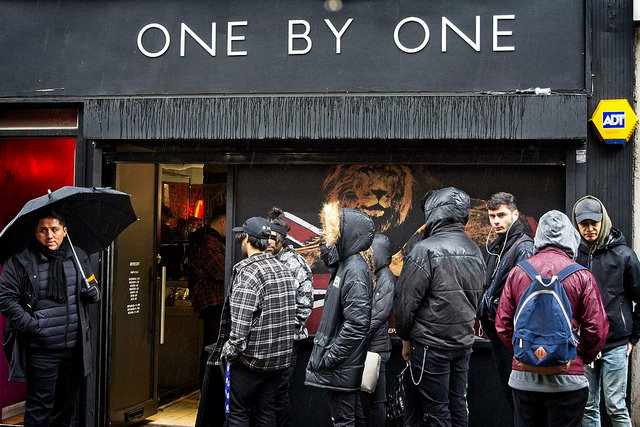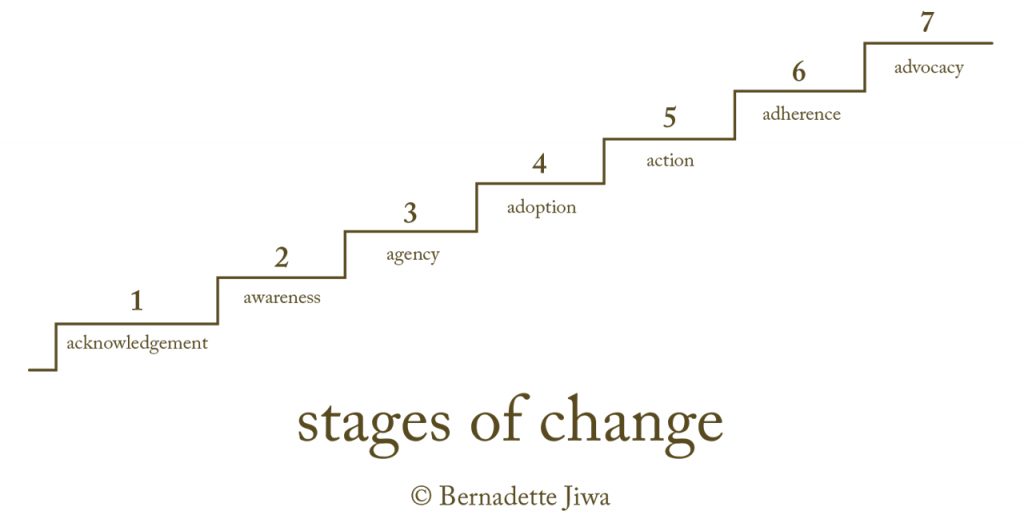Unlock the Magic in Your Story Now
Get the Free 20 questions to Ask Before Launching Your Idea workbook when you sign up for occasional updates.
Get the Free 20 questions to Ask Before Launching Your Idea workbook when you sign up for occasional updates.
Articles filed in: Marketing
The Right Customer
filed in Marketing, Storytelling, Strategy
 A lot has changed in the six months since I last walked through the Melbourne suburb of Albert Park. New cafes have opened. Others have closed their doors. Some established cafes have queues of people waiting for tables, while several, just a few hundred metres down the street, are empty.
A lot has changed in the six months since I last walked through the Melbourne suburb of Albert Park. New cafes have opened. Others have closed their doors. Some established cafes have queues of people waiting for tables, while several, just a few hundred metres down the street, are empty.
There’s no doubt that the best business ideas are a combination of the right product, launched at the right time. But even if a product or service ticks those two boxes, its success and longevity are still dependent on attracting and retaining the right customers.
We spend a lot of time thinking about and working on products and services, fixtures and fittings, design and marketing. We don’t spend enough time getting clear on who our ideal customer is, what they want from us today, and what will keep them coming back tomorrow. We can only begin to tell our story effectively when we understand the story of the person we’re trying to attract and delight. Who exactly is your right customer and why will he choose you?
Image by Garry Knight
The Feeling Customer
filed in Marketing, Storytelling, Strategy

One of the mistakes we make when we’re building a business and communicating our value is to only create for the thinking customer and his rational mind. Messages that resonate deeply connect with people’s feelings. Beloved brands and successful businesses appeal to their customers’ hearts, not just their heads. Wants and needs. Dreams and requirements. Desires and demands. Apple resonated by using design. Starbucks did it with rituals. Airbnb leveraged belonging.
We don’t just persuade people to act. We move them to act.
How are you serving wants as well as needs?
Image by Garry Knight
Seeing And Hearing Vs. Being Seen And Heard
filed in Marketing, Storytelling, Strategy

As children, we know that understanding what motivates our audience is the shortcut to getting attention. We seem to unlearn this ability to be empathetic communicators when being seen and heard becomes our main driver.
We have a better chance of being heard when we understand what the people we’re speaking to are open to hearing. We do that by asking ourselves better questions.
Four Important Messaging Questions
1. Who is this information for?
2. What do we want them to know?
3. Why do they need to know this?
4. What do we want them to do next?
Communication isn’t only about finding the right words.
It’s about finding the right reason to say them.
Image by Garry Knight
The Stages Of Change

If you’ve ever tried to quit a bad habit or establish a new one, you know that change takes time. When it comes to creating change in our own lives, we cut ourselves some slack because we know that change is a process. And yet when it comes to our customers, we impatiently hurry them through the process. We try to persuade people to act before they’re ready.
The result is a failed marketing strategy.
The alternative is to understand where your audience or prospective customer is in their change process and to meet them where they are. Here are seven stages people can progress through as they alter their opinion or behaviour.

THE STAGES OF CHANGE
1. Acknowledgement
Recognition of the problem or unmet need.
2. Awareness
Acceptance that change is desirable and possible results in the investigation of potential solutions.
3. Agency
Motivation to change or decide intensifies.
4. Adoption
Decision to commit to a particular solution is made.
5. Action
Action taken results in behaviour or perception change.
6. Adherence
Sustained behaviour change results in habit creation, compliance or loyalty.
7. Advocacy
Success results in the development of brand affinity and product evangelism.
We can’t begin to influence people unless we’re prepared to meet them where they are on their journey.
Image by Garry Knight
The Big Bang Is Overrated

When we imagine our ideal product launch we picture attention, applause and armies of customers beating a path to our door. Successful companies hardly ever launch with a big bang. Most hits begin with the slow and steady iteration of a product or service that’s improved by getting it in front of, and in the hands of customers and users.
We make things better by having the patience to tinker at the edges.
Image by Garry Knight
Hearts Before Minds
 People are creatures of habit. You only have to look at the rituals in your day-to-day to see how patterns permeate life. Think about the things you do on rinse and repeat. The brands you always buy. The supermarket aisles you choose to walk down. The ones you avoid.
People are creatures of habit. You only have to look at the rituals in your day-to-day to see how patterns permeate life. Think about the things you do on rinse and repeat. The brands you always buy. The supermarket aisles you choose to walk down. The ones you avoid.
We have come to believe the success of our companies or causes is dependent on marketing that convinces people to change their story. The chances of changing someone’s mind is more unlikely than we realise. What we must do instead of trying to alter a prospective customer’s version of the truth, is build on the story they already tell themselves about who they are and what they believe.
Change is hardly ever the result of people making u-turns en masse. Change happens when one person at a time takes a small step towards an alternative.
Image by Garry Knight
What Are You Promising?
filed in Marketing, Storytelling, Strategy
 Products and services are promises. A promise from the brand to the customer. The word of the maker given to the user. A commitment from the seller to the buyer. Sellers promise that things are fresh and safe, worthy and working—that they will meet spec and sometimes even delight.
Products and services are promises. A promise from the brand to the customer. The word of the maker given to the user. A commitment from the seller to the buyer. Sellers promise that things are fresh and safe, worthy and working—that they will meet spec and sometimes even delight.
Whenever we make or sell something, we’re making a promise, and the customer is paying for a change that happens as a result of that promise.
Successful businesses are built by being clear about and aligning brand promises and customer expectations. What are you promising and what change is your customer expecting?
Image by Garry Knight
What Could You Leave Unsaid?
filed in Marketing, Storytelling, Strategy
 When I was in high school, the geography syllabus required us to study South America for a whole year. One of our teachers who had a special interest in South America decided to make it her business to teach us everything she knew about the continent. Everything. No stone was left unturned, no river basin unexplored, no coastal plain unexamined. Two things were achieved by the end of the year. We could rattle off the capital cities and the length of the rivers, but we had lost all interest in knowing anything more about South America.
When I was in high school, the geography syllabus required us to study South America for a whole year. One of our teachers who had a special interest in South America decided to make it her business to teach us everything she knew about the continent. Everything. No stone was left unturned, no river basin unexplored, no coastal plain unexamined. Two things were achieved by the end of the year. We could rattle off the capital cities and the length of the rivers, but we had lost all interest in knowing anything more about South America.
The best teachers didn’t try to teach us all of the facts. They piqued our curiosity enough to make us interested in discovering more for ourselves.
And so it goes for our marketing messages. Our job isn’t to tell customers everything all at once. It’s to make them curious to learn more. The best marketers, like the best teachers, know how much information is enough and what to leave unsaid.
Image by Bill Dickinson
A Matter Of Marketing
 We live in an age when it’s easier than ever to get your message in front of people. Many businesses have a strategy for getting their message seen and heard—far fewer have a plan for being believed and understood.
We live in an age when it’s easier than ever to get your message in front of people. Many businesses have a strategy for getting their message seen and heard—far fewer have a plan for being believed and understood.
It’s one thing to get in front of people, and another for them to choose to keep you there.
It’s the market that dictates what matters, not the marketing.
Image by Gerry Popplestone
What Do You Want To Be Known For?
filed in Marketing, Storytelling, Strategy
 The food cart outside the gallery was in the perfect spot to attract the attention of hungry tourists. Judging by the two choices listed on the menu that’s exactly what the owner was thinking too.
The food cart outside the gallery was in the perfect spot to attract the attention of hungry tourists. Judging by the two choices listed on the menu that’s exactly what the owner was thinking too.
Now serving
Custard Tarts
Kale Soup
Differentiation starts with the choice to do one thing well.
Hedging your bets feels safer than putting a stake in the ground.
But it’s rarely a good branding strategy.
When you stand for something, people know. What do you want to be known for?
Image by Kent Kanouse